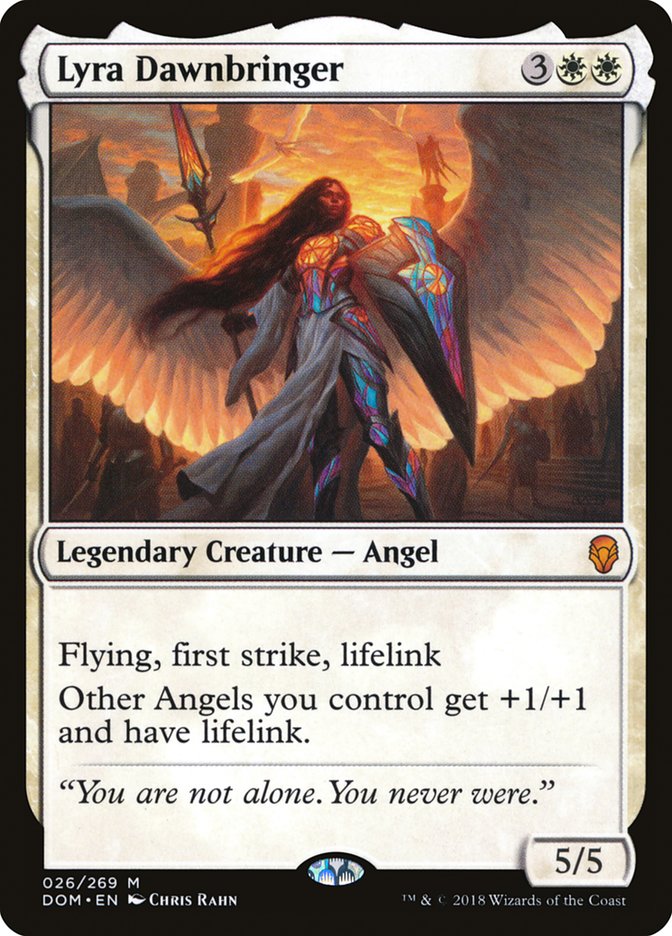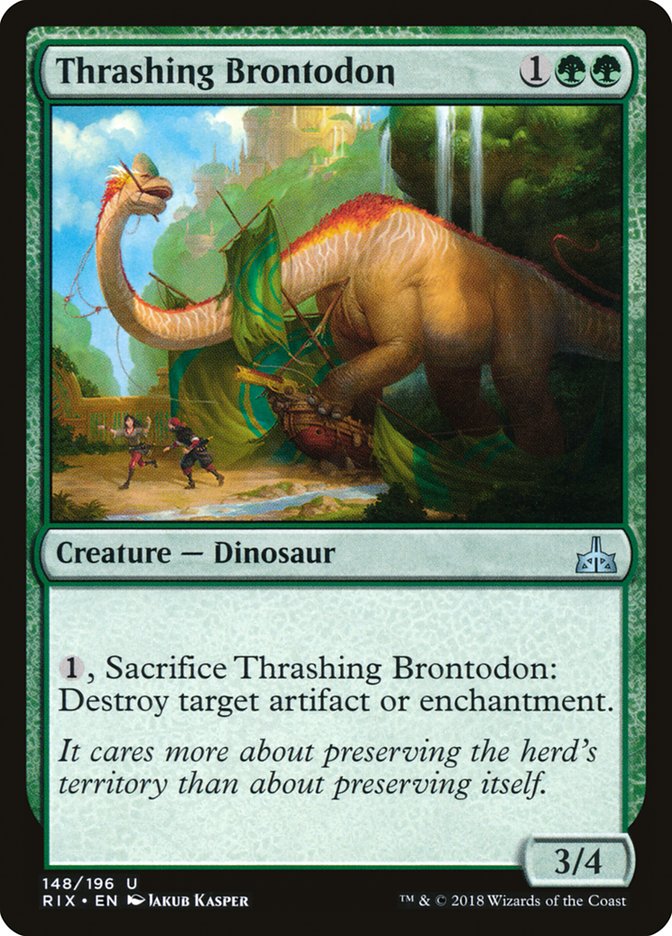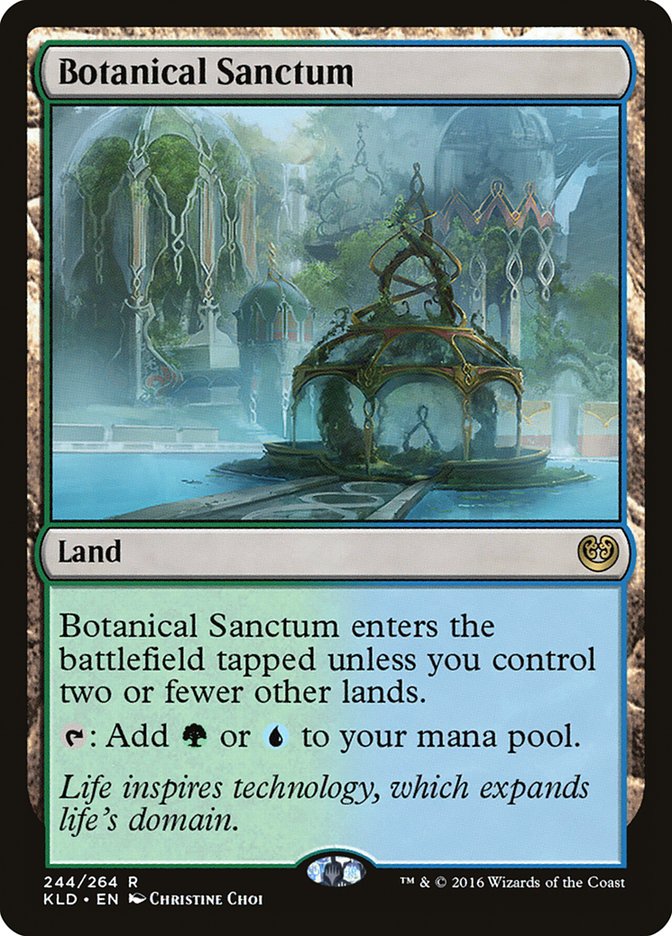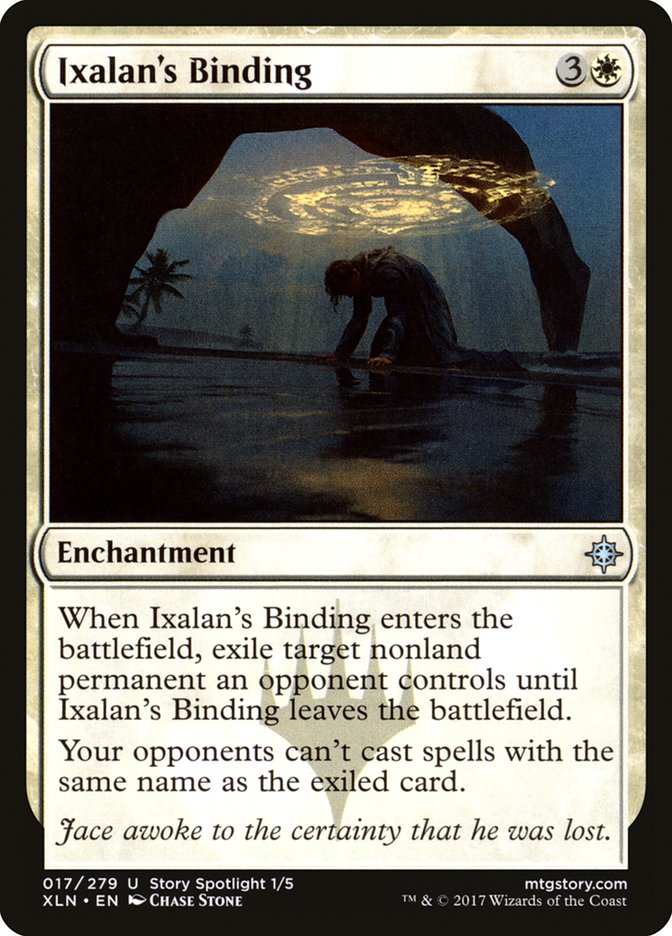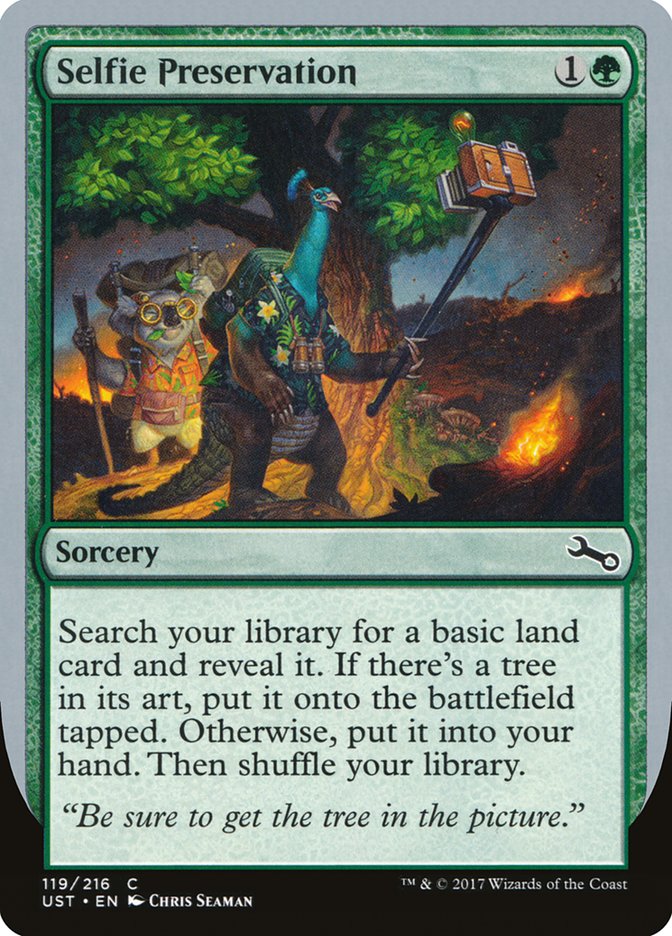Lyra Dawnbringer Shines Brightly
The card is basically a Baneslayer Angel reprint running amok in Standard, and I’m not all too surprised. I saw it in the sideboard of the winning decklist from the Team Constructed Open in Atlanta last weekend, and although I haven’t sat down and studied the tape of the games, I’m confident it was cast many times en route to victory.
Putting creatures in your sideboard is something I’ve seen people do for as long as I’ve been a tournament player and it’s unlikely to ever stop. In something like U/W Control, you put the opponent in a difficult predicament when you force them to be both proactive, since you own the late-game, and reactive, since you have haymakers like Settle the Wreckage and Lyra. The best I’ve found is Doomfall and the market agrees; it’s essentially a Standard staple.
Lyra is doing exactly what Baneslayer Angel did many years ago, showing up in both aggressive and control decks across the format. It’s almost like Archangel Avacyn insofar as your experience with the card will be suboptimal if you simply play four copies in all your white decks and hope to get by on the strength of the card alone. Team5c, who won the Standard Magic Online PTQ last weekend, used Llanowar Elves to help make Lyra a stronger card, which makes perfect sense.
Creatures (24)
- 4 Llanowar Elves
- 2 Rishkar, Peema Renegade
- 4 Walking Ballista
- 4 Merfolk Branchwalker
- 3 Thrashing Brontodon
- 3 Lyra Dawnbringer
- 3 Shanna, Sisay's Legacy
- 1 Shalai, Voice of Plenty
Planeswalkers (3)
Lands (24)
Spells (9)

G/W Legends sometimes will draw Llanowar Elves into either a second copy of Llanowar Elves or Rishkar, Peema Renegade, which gives you five mana on Turn 3 for Lyra. If I cast a Turn 3 Lyra on the play, I at least get to attack with it once before it’s exiled by Vraska’s Contempt, and I like to look at these cards in terms of total output outside of the context of a game. For example, someone might think Lyra is dealing five damage and gaining five life in this situation, but to simplify this and reinforce the total gain, I like to say it “deals ten damage.”
Is it literally ten damage? No. But sometimes the lifegain is more valuable than the damage dealt, sometimes it’s the other way around, and sometimes both are extremely relevant. It’s hard to know what the average value is over all scenarios, as it takes instinct and intuition, but trying to simplify the value as best I can is one way for me to wrap my head around exactly how good it is.
The Thrashing Brontodon Problem
Thrashing Brontodon is a widely played and popular card in Standard and this is surely because of the popularity of God-Pharaoh’s Gift. Thrashing Brondoton is a substantially less fragile version of Qasali Pridemage, which has seen tons of Constructed play over the years.
One issue I always had with Qasali Pridemage, Thrashing Brontodon, and cards like them is I usually only cast one when I want to destroy an artifact or enchantment because creatures are inherently fragile. The thought of playing three copies of a card to kill God-Pharaoh’s Gift that only works some of the time when I draw it makes me extremely nervous. How could I resist the temptation of casting my Bronty on Turn 2 off Llanowar Elves and getting in some first-class beatdown?
In reality, I’m looking at it like a Naturalize than can sometimes attack, but it’s much better as an attacker than can sometimes Naturalize. In addition to that, when it’s topdecked in a long game, it can be used for either mode, and with the rising popularity of Torrential Gearhulk and Heart of Kiran, that’s nothing to joke about.
I’m not at all surprised to see Walking Ballista make an appearance here, as it’s a phenomenal card that seems to show up in just about every deck in Standard. We used to joke that Temur Energy had an unbeatable opening of Botanical Sanctum into Attune with Aether. They banned Attune with Aether, which I think that was a great ban, but it takes two to tango and Botanical Sanctum is oftentimes indistinguishable from Tropical Island in many of the games you play in Standard.
If I wanted to make a list of things from Kaladesh that are meant to offend a competitive player, I would end up being here all day, so I’ll keep it short and sweet. Walking Ballista is very good, and it’s likely that every deck in Standard would be improved by playing two to four copies.
Walking Ballista gives you cheap answers to Bomat Courier, Llanowar Elves, and Glint-Sleeve Siphoner while also not being a dead draw against control, an awesome card to have in your opening hand, and a great topdeck later. It’s just simulating Fatal Push when you use it early to kill a creature and Fire // Ice when you draw it late to spray damage all over the battlefield.
It’s strange to see a G/W deck with this much creature removal and card advantage, but I’m just a lowly pro player here to play the hand I’m dealt and this is the constructed environment I need to adapt to. I would also like to take this opportunity to request that Team5c reveal their identity, as they have been beating me badly lately on Magic Online and I do not like it. If they choose to remain anonymous, then whoever you are, well done winning the PTQ and good luck at the Pro Tour.
The Binding of Ixalan
I’ve long been partial to Ixalan’s Binding as an answer to The Scarab God and Hazoret the Fervent. You know people who include this card in their deck are playing it in large numbers and it’s often integral to their strategy as it’s a guilt-free way of playing Extirpate, Surgical Extraction, or Slaughter Games.
These cards are, at face value, card disadvantage and they look like they solve problems, so weaker players are drawn to them. One of the biggest mistakes my opponents make in high-level tournaments is overvaluing exactly these types of cards, and I’ve seen it year after year (ever since Surgical Extraction was printed): people would sideboard it in against me and cast it basically at random.
Chapter 1 of the Pro Players’ Handbook states: “Don’t randomly Surgical Extraction cards that aren’t absolutely essential to your opponents’ gameplan.”
I had a six-hour car ride home from the Team Limited Grand Prix in Columbus last weekend and it took me quite a long time to help two of my car-mates understand that Time of Ice is intrinsically card disadvantage. In Limited, Constructed, or any game of Magic, really (and this is even more pronounced at the professional level), the single most likely way to lose is card disadvantage. In fact, all good players ever do is sit around and think of ways to creature card disadvantage for the opponent and mitigate card disadvantage for themselves.
I like to say things like, “Card advantage? You know, the lifeblood of our species?” It’s literally the reason I get out of bed in the morning.
The reason I bring this stuff up is because Ixalan’s Binding is a little bit pricier than Thopter Arrest, which sees some maindeck play as a glorified Oblivion Ring and the extra mana you pay seems to be well worth it. It’s also true that most opponents you face can’t interact with an enchantment in Game 1, so a card like this can be super powerful in Game 1s and sideboarded out as necessary.
Magic isn’t about which cards are good and bad; it’s about knowing the proper context where a card that has obvious flaws is your best option. I’d also like to mention that Ixalan’s Binding is a stone-cold killer against people who play with Gate to the Afterlife.
This phenomenon exists because Gate operates the same way as The Scarab God and Hazoret the Fervent: they’re normally cards that are hard for the opponent to deal with, they encourage the player with them to play many copies (usually three or four), and they’re super-important cards for that player’s strategy. Ixalan’s Binding is a no-questions-asked answer while also denying that card for the rest of the game. I like two of this card maindeck, or two in the sideboard for any deck worried about such cards.
See You in Baltimore! (And One Request…)
I’ll be playing this weekend’s Team Constructed Open in Baltimore alongside William Jensen and Reid Duke. It’s my first SCG event as a member of the team, so I’m excited to meet my readers or even just anyone friendly enough to say hello. As always, don’t be afraid to ask for a signature or a picture, as it’s not weird and it’s actually pretty cool and people do it all the time. It’s exactly the type of community outreach that works well for both parties.
That being said, if you want to say hello, please do not ask me what deck I’m playing. I’m a professional player, so these events make up part of my full-time career and my livelihood, and it costs me tournament equity if everyone knows what’s in my deck.
I understand most people ask just out of curiosity or to be friendly, but you’d better believe the only reason I registered and showed up is because my goal is to win, and when my goal is to win, revealing my strategy to strangers is at odds with this. I also have my Peach Garden Oath teammates to think about.
As a team we haven’t exactly nailed down decks and formats yet, but I love my teammates and have unending faith in them to perform admirably with any decks we settle on.
Thanks for understanding, and see you there!


